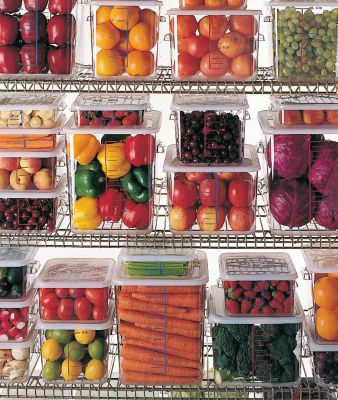FOOD STORAGE CONTAINERS
The preservation of the freshness of the food has great importance for health. Along with freshness, hygiene also increases the importance of products to be used for food preservation. For such reasons, food containers may need to have certain characteristics such as hygiene, leakproofness, airtightness, heat retention depending on the food. In response to these needs, the use of food storage containers has become widespread and the properties and qualities of the products used have gained importance.
TYPES OF FOOD STORAGE CONTAINERS
The food storage containers vary depending on the type of food to be stored or the area of use. However, there may also be differences such as the materials used in production, durability, leakproofness, multi-use / disposability.
The most common use today is plastic and glass food storage containers.
PLASTIC FOOD STORAGE CONTAINERS
The material used in the production of plastic food containers varies in terms of properties such as sealing, heat retention, airtightness, durability, multi-use / disposability properties. The most commonly used food storage containers are PET clamshells, PP food containers and foam food containers.
While some disposable containers, such as foam and PET, are used for shorter food storage, durable, leakproof and airtight plastic food storage containers can be used in long-term food storage, especially in refrigerated environments.
GLASS FOOD STORAGE CONTAINERS
Although glass food storage containers are more durable than disposable products, they are disadvantageous in terms of durability compared to many plastic containers. However, glass food storage containers are used intensively in order to protect food freshness for a long time in a healthy and hygienic manner.
DIFFERENCES BETWEEN GLASS AND PLASTIC
It can be said that there are significant differences between plastic and glass. They differ in physical properties and characteristics.
 Plastic is a malleable material which can be formed into different shapes during manufacturing process while glass is not malleable and is in its finished form.
Plastic is a malleable material which can be formed into different shapes during manufacturing process while glass is not malleable and is in its finished form.
Being durable, lightweight and disposable material, plastic can be versatile so it has mostly replaced wood, metal and glass in packaging.
Glass is more brittle than plastic. Being tougher in some situations, plastic can be more useful than glass in terms of durability.
Plastic is also lighter than glass. This is because plastic keeps larger microscopic air balls within its structure. Glass on the other hand has less and smaller air balls which makes it denser material than plastic. Glass also has heavier and larger molecules than plastic.
Plastic is made from tougher elements which make this material degrade slowly, so glass is a more advantageous material at this point having a better potential for being recycled and being a more sustainable material. But biodegradable plastic manufacturing processes are increasing its development.
-
PLASTIC RECYCLING Plastics have been one of the most popular materials used widely in various produc… Read more…
-
FOOD STORAGE CONTAINERS The preservation of the freshness of the food has great importance for healt… Read more…
-
PLASTIC CONTAINERS Plastic containers can be defined as containers made partially or completely of p… Read more…
-
PLASTIC CUTLERY DISPOSABLE TABLEWARE Disposable tableware includes all disposable tableware like dis… Read more…
-
CLAMSHELL PACKAGING A clamshell packaging container is a one-piece container consisting of two halve… Read more…
-
FOAM FOOD CONTAINERS Foam food containers are disposable containers for various foods and beve… Read more…



0 Comments